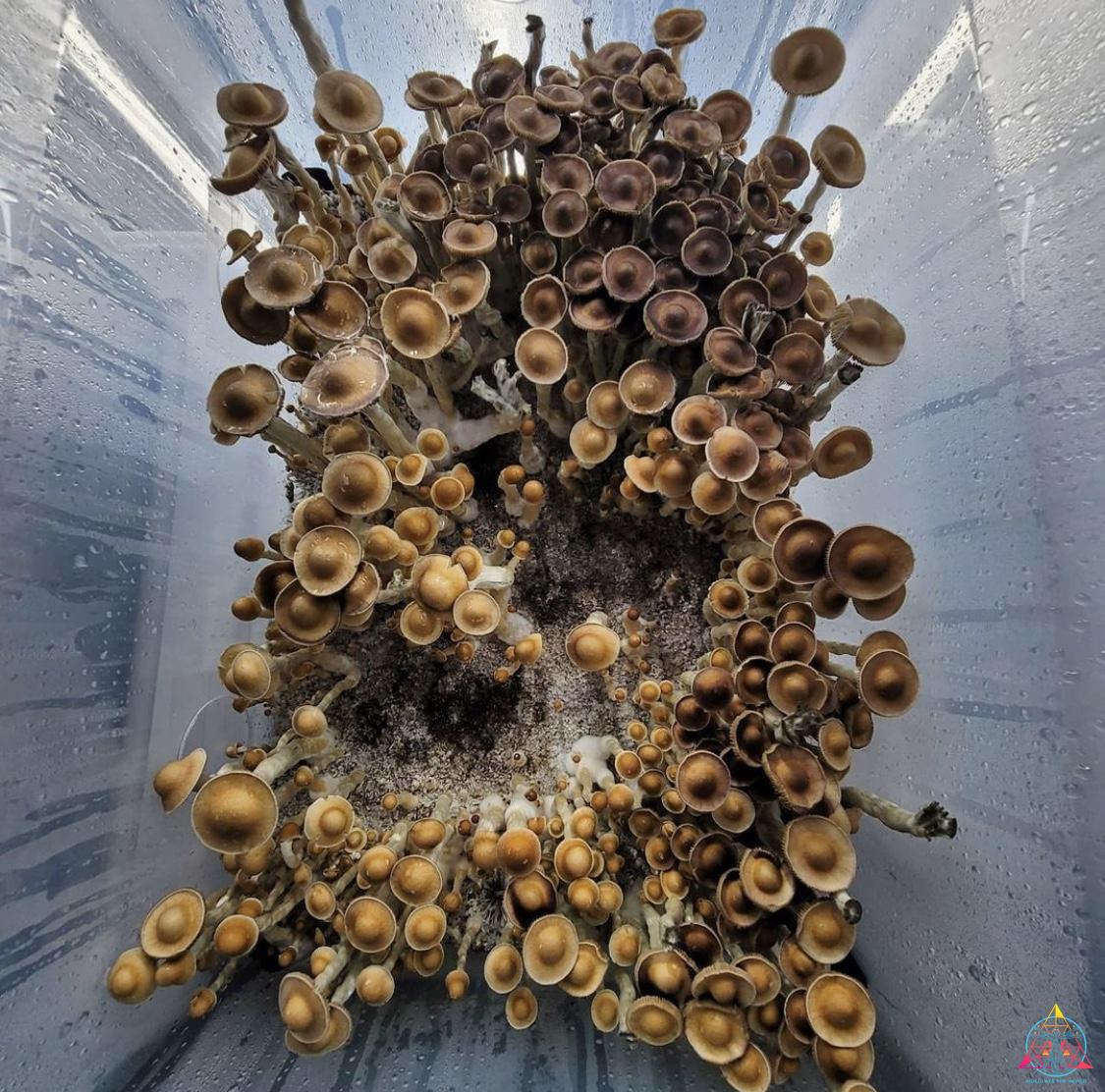
On a collection trip to Guyana in 2006, botanist Kenneth Wurdack was strolling along an airstrip at Kaieteur National Park when he noticed something unusual about the flowers on two species of yellow-eyed grasses. Unlike the species’ typical blooms, they were a more orange shade of yellow, tightly clustered and spongy in texture. “I just sort of filed it away as an incidental thing,” Wurdack says.
On subsequent trips, he observed more examples of the strange phenomenon. Digging through relevant botanical literature, Wurdack learned what was actually going on: The orange oddities were not really flowers at all. And the yellow-eyed grasses—which belong to a genus called Xyris—had not made them.
Instead they were mimics—the product of a fungus that Wurdack, who works at the Smithsonian National Museum of Natural History, and his colleagues recently described. The fungus, Fusarium xyrophilum, infects an Xyris plant and sterilizes it to block the plant’s own blooms. Then F. xyrophilum hijacks an as yet unknown aspect of the plant’s operations to host pseudoflowers made entirely of fungal tissue—potentially tricking pollinators to disperse its spores rather than pollen from the plant’s flowers. The finding is thought to be a first of its kind on record.
Fascinated by this likely case of fungus posing as flowers, scientists are now left wondering how this fungus evolved to deceive—and to do it so well. “This is the only example that we know of, anywhere on planet Earth, where the false flower is all fungal,” says Kerry O’Donnell, a microbiologist at the U.S. Department of Agriculture’s Agricultural Research Service and a co-author of the recent study about the pseudoflowers, which was published in Fungal Genetics and Biology.
A handful of other fungal imposters only go partway, typically modifying a host’s leaves rather than building their own mock flower. For instance, some rust fungi belonging to the order Pucciniales induce hosts to produce rosettes of leaves (in place of their own flowers) on which the fungus erupts, resembling nearby yellow-colored flowers. Another fungal species called Monilinia vaccinii-corymbosi, which infects the leaves of blueberry bushes, does not form flowerlike structures. But the blighted leaves reflect UV light, emit a fermented tea odor similar to that of blueberry flowers and provide nectar, all of which could attract insects.
So the authors of the new paper wondered if there were more to F. xyrophilum’s elaborate mimicry in yellow-eyed grasses, given that many insects navigate by smell and are able to perceive ultraviolet light.
The study’s lead author Imane Laraba, also a microbiologist at the Agricultural Research Service, used an ultraviolet filter to photograph F. xyrophilum pseudoflowers that Wurdack collected in 2010 and 2012. As speculated, the fungus’s tissues reflected UV light, a property of many yellow-hued flowers that could help pollinators locate them. In the wild, Laraba says, Xyris flowers likely also reflect UV light.
Two pigments isolated from the pseudoflowers—and also confirmed in lab-grown F. xyrophilum—could be responsible for this UV reflectivity and fluoresce at ranges especially visible to bees, the researchers say. In the lab, they also documented the species emitting up to 10 chemical compounds, many of them known to attract insect visitors.
Did this fragrant chemical cocktail recorded in the lab match the scents of the wild Xyris flowers that F. xyrophilum mimics? Because of the COVID-19 pandemic, Laraba’s team could not travel to South America to study live Guyanese Xyris flowers and F. xyrophilum pseudoflowers. So they looked at a proxy species that grows in the southern U.S.’s savanna habitats: Xyris laxifolia var. iridifolia, a perennial that looks similar to the Guyanese plants. Comparisons of the chemical cocktails produced by the uninfected X. laxifolia flowers and F. xyrophilum cultures revealed that both emit 2-ethylhexanol, a compound that attracts pollinators and others insects, such as honeybees, bumblebees, whiteflies and cowpea weevils.
Still, floral scents can vary between species of the same genus. And aromas are better understood as a blended profile than individual compounds. “I think it’s a case of mimicry that still needs more documentation,” says Jonathan Gershenzon, a biochemist at the Max Planck Institute for Chemical Ecology in Jena, Germany, who was not involved in the new study. “But when you look at the shape, the color [of the pseudoflowers], it’s hard not to be incredibly impressed with what nature has done.”
Terry Torres-Cruz, a plant pathology graduate student at Pennsylvania State University, who was also not involved in the recent work, plans to separately explore the Fusarium fraud. Once the pandemic wanes, she intends to travel to Guyana’s tropical savannas to trap the fragrances produced by both Xyris and F. xyrophilum flowers and to track their insect guests. By studying how the whole system functions in the field, her work could solve the mystery of these fungal doppelgängers.
Related Articles
Forage to Feast: Exploring the Biology and Culinary Magic of Morel Mushrooms
It’s a mild spring day, with the warm sun casting flecks of light on the forest floor. Deciduous tree branches tangle together overhead and close in around a grassy depression, likely the remnant of a past disruption or abandoned pathway. The mushroom forager...
The Mushroom of Immortality: Learn About Medicinal Reishi Mushrooms
Reishi, along with the entire Ganoderma Genus, is prized for its health benefits, and is among the most unique-looking fungi in our collection. In this article, we’ll discuss some of the health benefits of Reishi mushrooms and Ganoderma as a whole. We’ll also discuss...
Washington’s New Psilocybin Therapy Bill & The Future of Legal Mushrooms
At the beginning of this year, Senator Jesse Salomon along with thirteen co-sponsors, filed Senate Bill 5201. This bill would allow for psilocybin-assisted therapy in Washington State. If passed, it would structure regulations for licensed therapeutic programs using...











